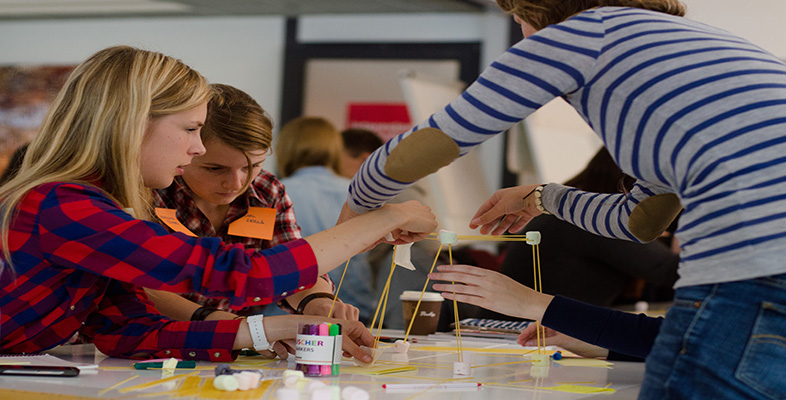1 Thinking about leadership
In this section you will consider the increasing emphasis on leadership in early years practice. As a concept, leadership can be interpreted in a variety of ways, dependent on social and cultural contexts. The growing emphasis on leadership is based on the premise that effective leadership will mean improved outcomes for children’s care, learning and development. We take the view that leadership is the concern of all practitioners and not the exclusive domain of one individual, the designated leader. Stacey (2009) notes that while good leadership is key to a team’s success successful leaders are dependent on the rest of the team. From this perspective, leadership can be seen as an interactive two way process of influence. In other words, whether or not you are designated as ‘in charge’ or ‘a manager’, you are still in a position to reflect on your practice, effect change and influence the quality of provision in your setting. The idea of leadership as shared, dispersed or ‘distributed’ between team members, empowers leaders and other practitioners and enables an early years team to work together in a culture of learning and shared knowledge.
Working in early years settings is becoming increasingly complex and the roles demand high levels of knowledge and skills in practitioners and leaders. Aubrey (2018) uses the phrase ‘distributed leadership’, supporting the idea that early years provision is too demanding to be met exclusively by any one person. This suggests again that each member of the whole team, to a greater or lesser extent, has a crucial part to play. In this sense there may be a designated leader, but the culture of the setting is not one of ‘leader and followers’–rather, it is that of a team with everyone working comfortably in a climate of evaluation and reflection.
Developing a team culture is a key aspect of leadership. The nature and structure of the team will vary according to context and the work to be done, but those in the team should be working towards common goals. Crucial to this way of working are communication and the strategies used by team leaders and members. One common denominator in an early years setting is that a number of adults are involved. A home-based practitioner, for example, may not appear to be in a ‘team’ or be a ‘leader’ but may be working with other home-based practitioners, children’s centres and local support services. As an early years practitioner, you will need leadership skills for a host of purposes, including leading the curriculum, decision-making, working with parents and carers, developing policies, working with other professionals or agencies, dealing with conflict, and organising the environment.
Activity 1 Factors influencing leadership
The objective of this activity is for you to think about your understanding of leadership and to reflect on factors that impact on effective leadership in your setting.
Read through the following questions and record your responses.
- How does ‘leadership’ operate in your setting, and how do you think it is different from ‘management’?
- Are there any factors that contribute towards effective leadership in your setting?
- What factors may hinder effective leadership in your setting?
- How does leadership in your setting enhance the quality of provision and improve outcomes for children’s care, learning and development?
Comment
You are likely to have thought about the difference between ‘leadership’ and ‘management’ before, but perhaps not in relation to your setting.
Sarah, a nursery assistant in a private day nursery, wrote:
In my setting the leader is our nursery manager and she is the ‘boss’. She takes on a lot of responsibility for the day-to-day running of the setting such as planning and setting up activities. Then she tells us what is happening that day. I think this is more management than leadership. It doesn’t feel very effective as we are not often asked as a team to contribute and sometimes we are not told what is going on, such as when we are having a visitor. It is always the nursery manager who shows parents around and I think other members of staff should be allowed to take on more responsibility if they are willing. One thing that is good, though, is that she encourages us to go on courses, and this helps to improve outcomes for children in our key person groups.
